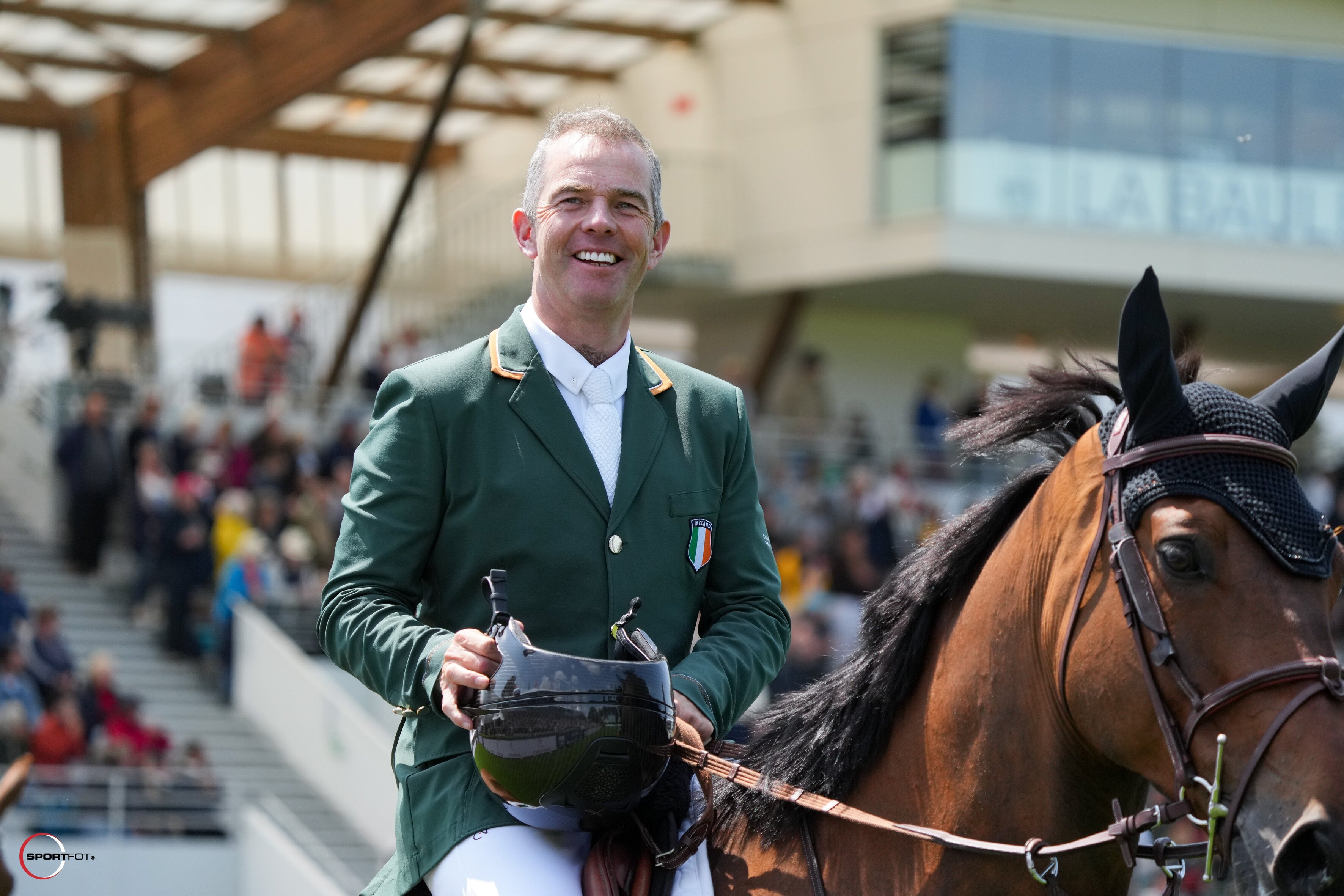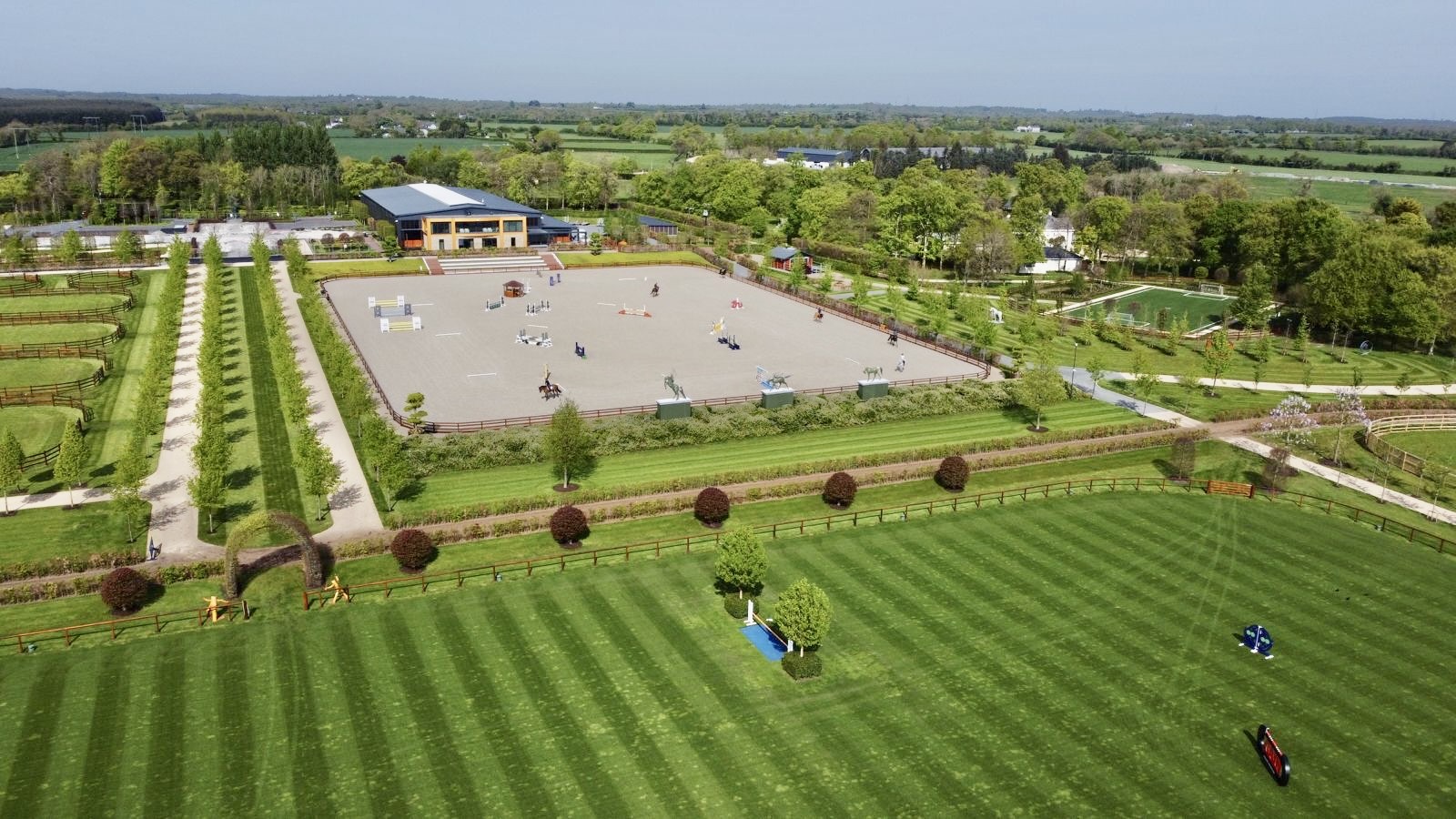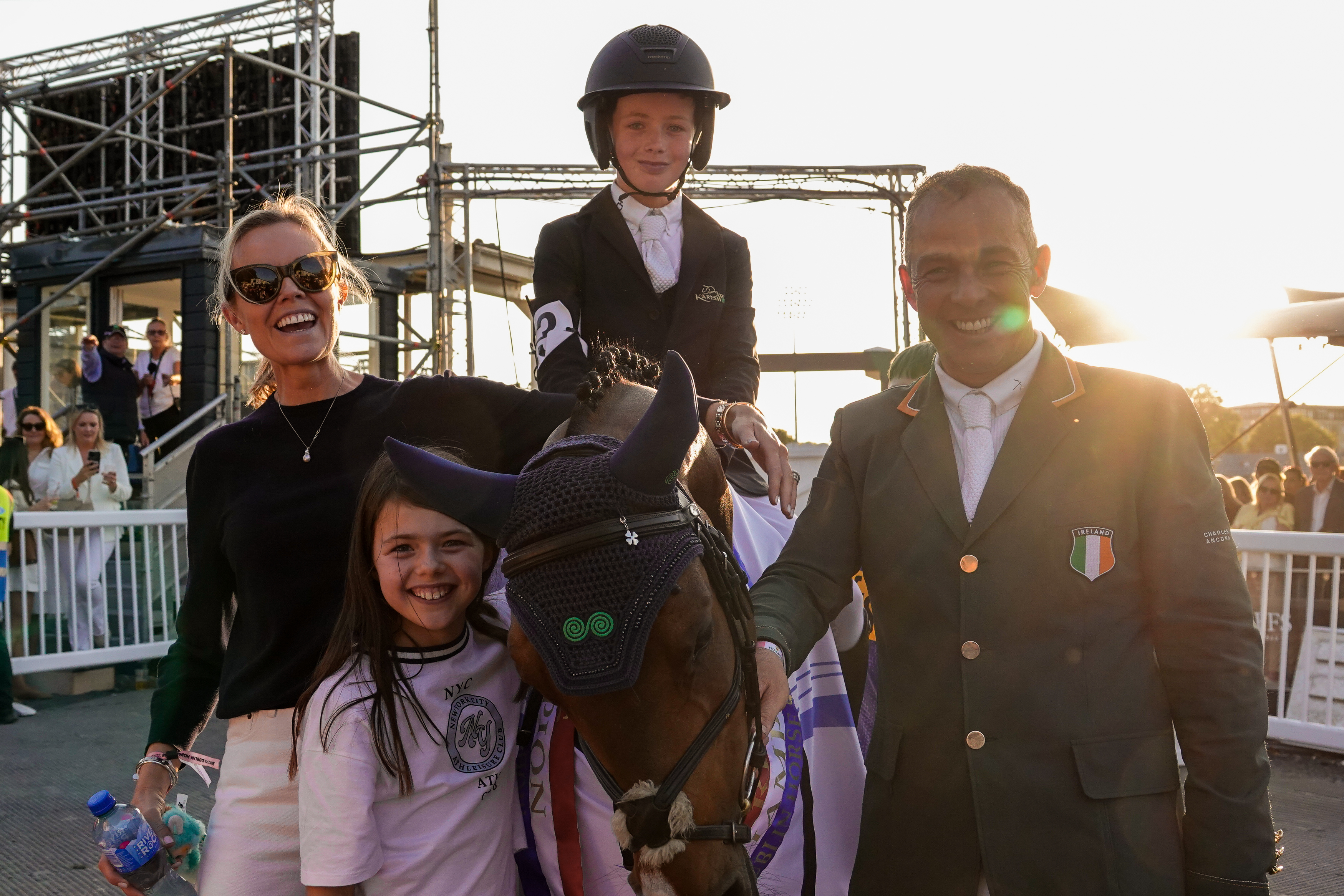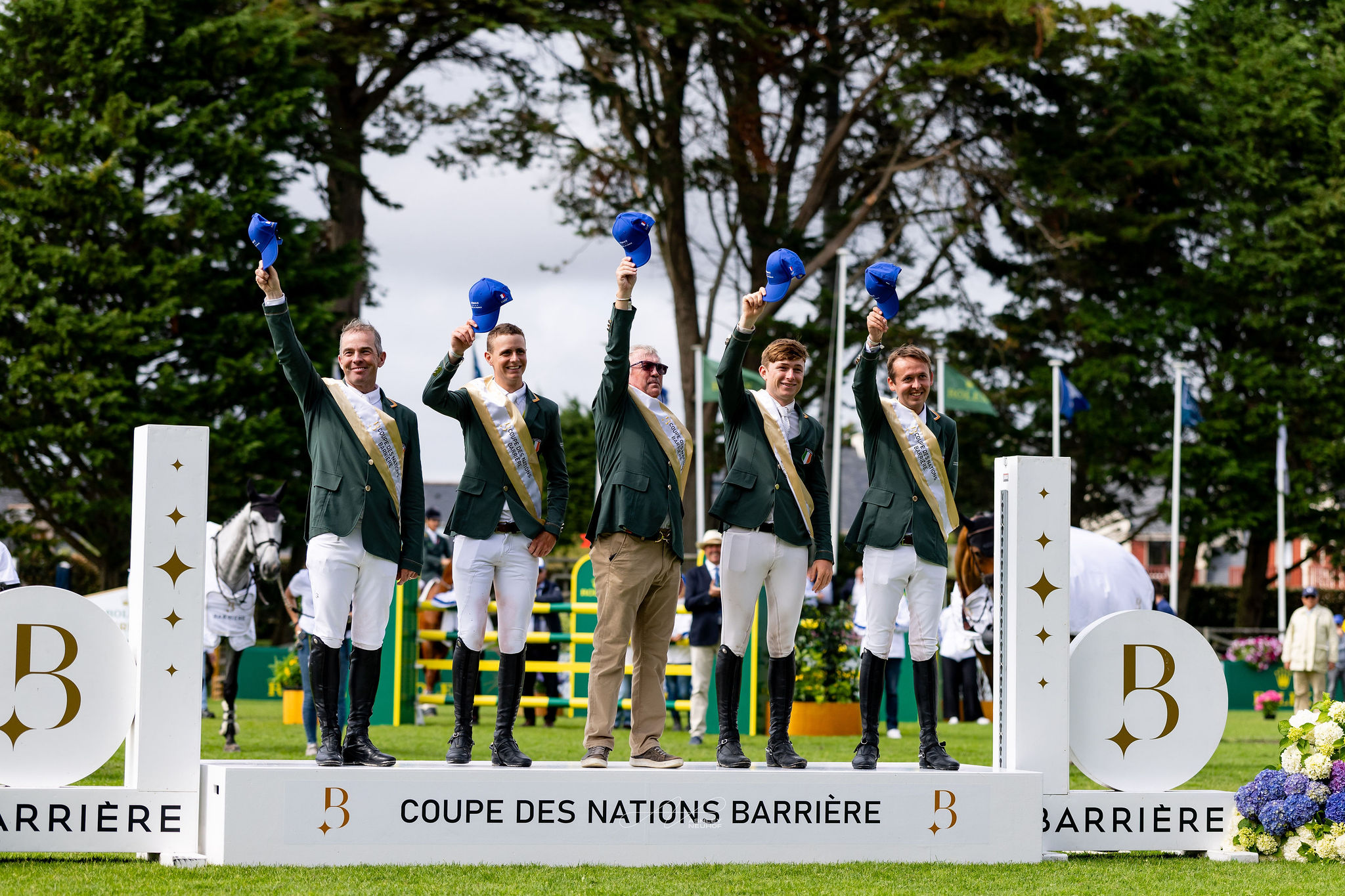THE CIAN O’CONNOR WAY: FORGING LEGACIES & TEAMS TODAY
(No part of this article may be copied or reproduced in any form without the permission of HT)
CIAN O'CONNOR - AN ACCOMPLISHED OLYMPIC MEDALLIST AND A FAMOUSLY ASTUTE BUSINESSMAN, CONSISTENTLY OPERATES AT THE INTERSECTION OF ELITE EQUESTRIAN SPORT AND GLOBAL INVESTMENT. 2025 HAS BEEN A LANDMARK YEAR FOR HIM, MARKED BY THE SIGNIFICANT ACQUISITION OF TOP TALENT, INCLUDING CHATOLINUE PS, EMERALDO 4, KASPAR R, AND KENTUCKY TN, CEMENTING HIS VISION OF BUILDING A FORMIDABLE TEAM FOR THE FUTURE.
BEYOND HIS PERSONAL SUCCESS, O'CONNOR IS SHAPING THE NEXT GENERATION, EVIDENCED BY THE STUNNING RISE OF ONE OF HIS PROTÉGÉS, 20-YEAR-OLD FEI RISING STAR TOM WACHMAN.
IN THIS EXCLUSIVE HORSE TIMES INTERVIEW, WE DELVE INTO THE "CIAN WAY": A METICULOUS VISION THAT BALANCES THE RUTHLESS DEMANDS OF A GLOBAL MARKET WITH THE DELICATE ART OF PARTNERSHIP BUILDING, ASKING HOW THIS MASTER OF THE RING TRANSITIONS FROM AN INDIVIDUAL COMPETITOR TO THE ARCHITECT OF A LASTING EQUESTRIAN LEGACY.
1. You've had a significant year acquiring new talent (Chatolinue PS, Emeraldo 4, Kaspar R, Kentucky TN). As a rider, how does your mental preparation change when you know you are building towards a team, not just an individual star?
Firstly, I believe we have multiple facets to the business in Karlswood. Over the last two years I've developed a syndicate called ‘Karlswood Partners’ where people can invest in horses for me to compete with ultimately, and to try and keep me at the top of the sport. We sometimes sell those horses, but generally, that group of horses is bought for my competition horses. Running parallel to that, I have horses that I buy and sell myself at Karlswood. And then I have various partners, particularly the young Wachman men, Max and Tom. I have a trading company with them where we bring on young talent and develop them to Grand Prix level. Thus, we have multiple operations within the business.
In relation to building up horses, I treat every horse I get as an individual. I have a really good team around me and together with them, we see what the horse needs. Normally, when we get a new horse, we take a step back before we go forward. We get to know the horse, jump them in smaller classes, and then gradually build them up and make aims for each individual horse for the coming season.
2. When acquiring a horse like Emeraldo 4, who had great results with Laura Kraut, what is the single biggest unseen adjustment you and your team make to transition a successful horse into the "Karlswood way" of doing business and training?
When one buys a horse from a top rider like Laura Kraut, it's often easier to follow than buying from say, an amateur who has a particular relationship with a horse. Buying from professionals, I often find works well because the horse is very well educated and trained, as is the case, of course, with a horse from Laura. And then, for every horse that comes in, I like to ask the previous rider what the routine was: when did the horse go to the field, how did you shoe him, and how did you work him? Normally, I ask for the bits or photographs of the bits, so I try to follow suit. And then, as I develop my own relationship with the horse, I can move left or right of centre, depending on what I feel might help the horse. But generally, I like to stay with the same programme so as not to give the horse too much to adjust to.
3. Your protégé, Tom Wachman, finished fourth in the World Cup at Ocala, just behind you and recently won the FEI Rising Star award. How do you balance the drive to win yourself with the deep pride you must feel in seeing him become one of your competitors?
I've worked with Tom and Max Wachman since they were 12 and 13 years old, and now they're 20 and 21. Seeing them grow and develop off the horse has also been as enjoyable as watching their progress in the saddle. Both young men are top-class riders and also great personal friends. When we work together, we work as a team. Obviously, everyone wants themselves to do their best, but if we have a rail down or we're one place below, we're only happy that the other one goes well. And I know they feel the same.
I was delighted to see Tom win the award. He balances things well and he just finished a commerce degree at University College Dublin. He's also involved in parts of the family business. He wants to try and go to the 2026 World Equestrian Championships in Aachen and the 2028 Olympics in Los Angeles. These are very big targets and goals that we're working towards, but I think he has the mentality and discipline.
Max has the same targets and goals and is building a fantastic group of horses. He’s been hugely successful all the way up from Youth Championships to Senior levels, and was the youngest Irish team rider to ever win the Aga Khan Nations Cup at the Dublin Horse Show in 2022.
4. With Chatolinue PS now secured for the winter, how do you design a winter programme that prioritises partnership-building over immediate competition, and how do you measure success in that non-results-driven period?
In relation to Chatolinue, I used a little tour in Vejer de la Frontera in Spain over the last month to get used to him, and I jumped him in the 1.45m and 1.50m classes where he did very well. This week I worked him at home and did some small jumps in the indoors, and over the next month, I want to do some small international shows and build him up to CHI Geneva before Christmas. I'm hopeful by then that he'll come to Florida for the winter season and I can get used to him and campaign him, and we'll see how the partnership develops. But with the World Equestrian Championships on target next year, he'd certainly be one of the horses that I'd be thinking would be on my list.
5. Beyond medals, what do you hope is the lasting, definitive business signature of the Karlswood brand, is it consistency, strategic horse development, the success of your clients, your sponsors, or your personal success?
The Karlswood brand and legacy is important to me. I've got two young children coming up through the ranks - Ben at 12 and Cara at 9 years of age - and they're doing quite well in the ponies. My wife Ruth and I aren't going to push them into it, but if they're good at it and they enjoy it, it'll be nice if they have Karlswood to step into.
What I like about the Karlswood brand is we try to do things in a uniform way, from how we care for horses, how we feed them, how we look after them, how we train them, to how we travel them, and to how we plan the careers of the horses we have and the clients that are based with us. You could say I've come up with what I feel is a Karlswood system or a Karlswood way of doing things. One would hope this endures and becomes a template for others to follow. I wouldn't be averse to developing the “Karlswood Way” in other states and continents around the world once I finish riding."
6. At 46, you've witnessed major changes in the sport. What is the single most important piece of non-riding, business advice you would give your 19-year-old self when he rode his first Nations Cup?
The sport has evolved so much that it moves on every three to five years. It's a very different sport now than when I started. I think we need to be resilient, and we need to be able to be a little bit more relaxed about things. We're all very serious and we all want to achieve and strive for success; however, we have to learn to be able to dust ourselves off because there are plenty of days that don't go right.
And, you know, my wife recently told me - because she's so heavily involved with the ponies - she said, "God, I can see why you love this game so much. It's like an addiction." You have all the hard work, and you have all the late nights, and you have all the grind, and things go wrong, but then you get that one little bit of success, and it keeps you going for another six months.
And that's the way it is. It's a labour of love, and we all enjoy it. I think it's important to realise that most people, or everybody that got into horses, who are jumping at our level, they all got in from the very beginning because they love horses.
Showjumping is a sport and is a business, but the fundamental part is the love for the horse, and that's why we all got involved in the game and we're passionate about them. It’s important to keep focused on that, not lose sight of it, and to enjoy the journey.
7. If you had to single out one piece of non-human equipment or technology that has been indispensable to your success and team efficiency in 2025, what would it be and why?
We have an equine spa at Karlswood, the ECB Equine Spa - and we've had it for some time. I like it a lot and I think it's important for a horse's recovery and they enjoy it. It's the equivalent, I suppose, to ice baths for athletes, such as rugby or football players, and so on. That's something that we like to use on our horses for prevention and for recovery after competing.
8. Showjumping is visually exciting, but it's also a high-stakes global business. If you were giving a talk to an audience of tech entrepreneurs or venture capitalists, how would you pitch the 'Showjumping as a Global Investment Asset' concept, specifically highlighting the key market inefficiencies or opportunities you leverage?
Even though showjumping is a huge industry, it's also still a family sport and there's something for everybody. And you can see that when you go to shows like Wellington and so on, that you can have the kids involved, the whole family. It's something for everyone to enjoy. It's a healthy, clean sport where people can enjoy success together as a unit.
If you're talking to tech entrepreneurs on the way forward, they might understand the synergy needed in this sport; it's an unusual game in what we can achieve together with a horse. It's that special bond between horse and rider.
When spectators who don't understand it watch the competition, I suppose they don't truly grasp the extensive training and work that goes into making it happen. The special part is when all that preparation comes together and success is achieved.
9. If you could jump one iconic course, past or present, from equestrian history, not to compete, but purely for the experience, which one would it be and why?
I love looking at some of the old videos from the Olympic Games going back 40 years. The jumps just looked massive! The courses were different and a little less related. So jumping an Olympic final from before my time would be interesting.
10. In a high-stakes jump-off, what is the single, subconscious physical or mental cue you give your horse to secure a performance?
I think it's important to keep the horse relaxed. If he’s your partner that you know and you ride every day and you hack him out, and he knows you, he can feel tension, and you have to treat any big day, whether it's a big Nations Cup, a major jump-off, or a major championship, you have to try and treat it like any other day.
And I've also learned from watching other riders who do so well against the clock that it's important to practice and train against the clock. Many of us, typically haven't done that in the past. Then we go to the jump-off, and it's a whole other experience for the horse.
So, further training on small jumps against the clock at home is important so that when you do it in the competition, it's not new to the horse.
11. If you had to trade professions for one season with any other Irish Olympian in any sport who would you choose and what specific lesson do you think you could bring back to showjumping?
It's hard to say. I think there's so much to learn from other athletes in terms of their discipline, their training, and the technical aspect from some other sports. Sometimes we're a bit traditional and we think, "Oh, we do it off feeling," or we do it off what we think, and other sports have moved on a little bit and are more technical than us. Having said so, I do think showjumping is catching up, but exactly because it is a horse, there's always heart monitoring and interval training. It's not just good enough to hope for the best. To maximise performance, we have to scrutinise our stuff, including heart monitoring and interval training. If you take golf, for example, champions such as Rory McIlroy, practises his swing for hours and hours or his putting or to get whatever parts of his game right, where often we just exercise the horse. We actually have to exercise and train the weaknesses or the areas where we want to get better. I think that's the balance in life. I know I find myself between coaching and running the business and family and competition. Sometimes you have to make "me time," as I say, for training the horse and for training yourself, because you can get caught up in the hustle and bustle and forget. You've got to keep improving. If you don't keep improving, there's always going to be somebody else coming up behind you who's going to be better. HT
*Cian was born on 12 November, 1979
**Some of O’Connor’s major 2025 results are:
Winner of the CSI5*-W Longines FEI Jumping World Cup™ Ocala - riding Bentley de Sury. (North American League).
Winner of the CSI5* Banorte class Monterrey, Mexico - riding Pegasus.
Second place at the CSIO5* Rolex Grand Prix of Rome - riding Iron Man.
Team Ireland win at CSIO5* Nations Cup of La Baule – riding Bentley De Sury.
Second place in the CSIO5*Lugano Diamonds Grand Prix of Ocala - riding Iron Man.
Second place in the CSIO5* Grand Prix of Abu Dhabi - riding Iron Man (Arab League).
Team Ireland third place win at the CSIO5* Aga Khan Nations Cup at the RDS Dublin Horse Show - riding Bentley De Sury.
Team Ireland third place in the CSIO5* Falsterbo Nations Cup – riding Kentucky TN.
Photos courtesey of Cian O'Connor by Sportfot / Equisportif / Karlswood / Ashley Neuhof






